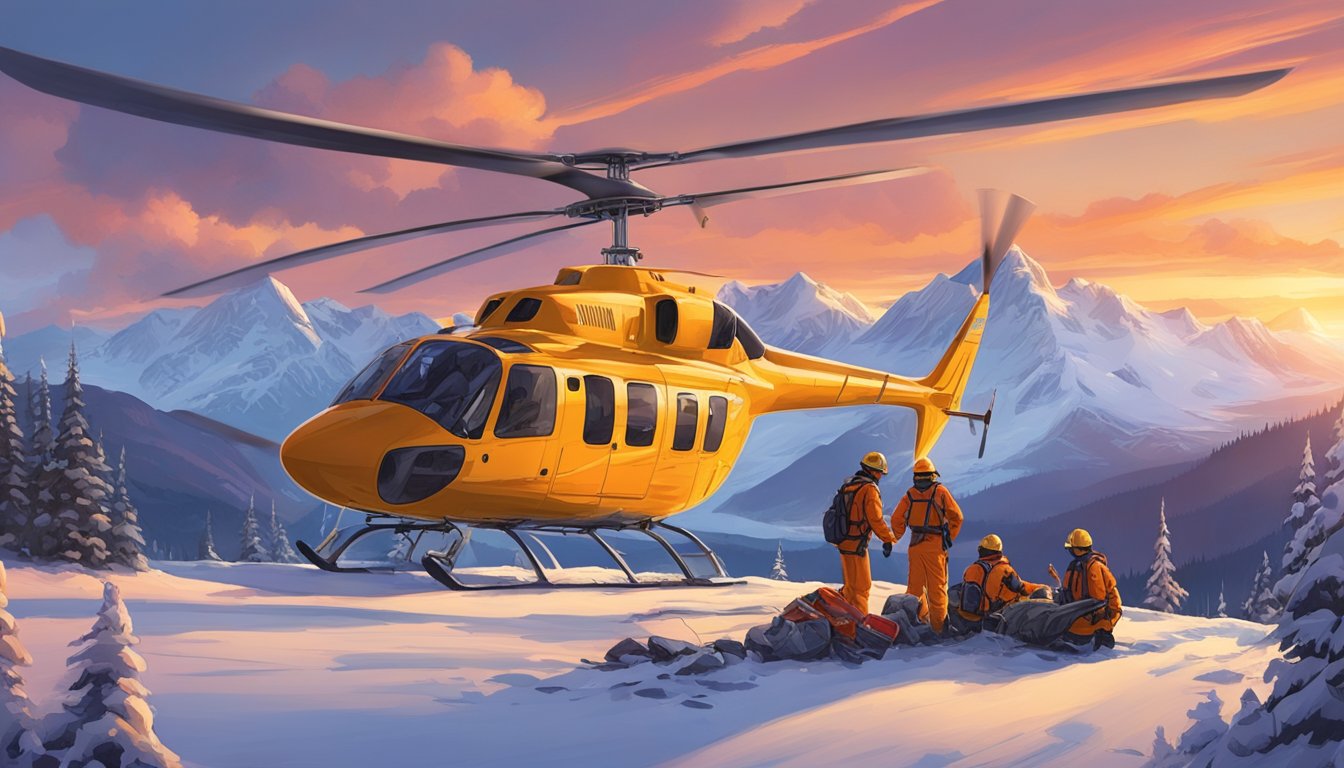In late January, various rescue teams from the Alaska Air National Guard, the Army National Guard, and active military units united to tackle an array of critical missions.
Their operations included responding to three separate aircraft incidents, aiding a snowboarding avalanche victim, and managing the recovery of a helicopter that had become stranded far from its base.
FOUR RESCUE MISSIONS IN SEVEN DAYS
Typically, winter sees a dip in military rescue activities in Alaska, but an unexpected surge of emergencies arose, leading to several successful operations by the state’s aviation units.
As January drew to a close, the 176th Wing of the Alaska Air National Guard was dispatched to a remote site in Canada after an ultralight aircraft crashed.
This mission followed a string of urgent calls, which also included assisting a small plane in distress near Anchorage, racing to help a snowboarder caught in an avalanche, and locating four survivors of a separate plane accident stranded on a secluded lake.
Complicating matters, one of the Guard’s helicopters encountered mechanical failures during the Canadian operation, requiring additional support to facilitate its recovery from a location 500 miles away from its home base.
COLLABORATIVE EFFORT IN FARO
The intense week of missions kicked off on January 26, when the air guard was activated to head to Faro, Canada, after an ultralight went down.
Located about 250 miles from the Canadian border, with Faro another 250 miles into the Yukon Territory, the distance posed a significant challenge.
For this critical operation, the 210th Rescue Squadron sent an HH-60 Black Hawk helicopter, modified for extended missions and equipped with a hoist system.
Alongside them, two pararescue specialists from the 212th Rescue Squadron joined the effort.
Supporting them were the aerial refueling capabilities of an HC-130 tanker from the 211th Rescue Squadron.
After successfully landing at the crash site, the helicopter crew rescued the two survivors and brought them to Faro, where they were turned over to Canadian emergency services.
However, upon inspection, the helicopter revealed serious mechanical issues, sidelining it until repairs could be made.
Consequently, over the next week, additional airlift missions were needed from Joint Base Elmendorf-Richardson to various Canadian locations.
While repairs were underway, rescue operations continued back home.
On January 30, another HH-60 responded to a call involving a Piper Super Cub—a popular aircraft in Alaska—experiencing engine trouble roughly 20 miles from Anchorage.
The helicopter crew located the plane on the ground and began assisting the pilot.
Initially, the pilot assessed if the aircraft could be flown safely but ultimately decided to request an evacuation.
ONGOING RESCUE EFFORTS
On January 31, operations escalated further as Alaska State Troopers alerted rescue teams to a snowboarder injured in an avalanche at Turnagain Pass, a well-known backcountry skiing area approximately 40 miles southeast of Anchorage.
The rescue team quickly reached the site, discovering that some helpful snowmobilers had established a safe landing area for the pararescue personnel.
Upon arrival, the rescuers determined that the snowboarder was suffering from hypothermia, although his condition was not life-threatening.
As they transported him to Anchorage for medical treatment, another urgent call came in.
While en route, the team learned of an aircraft slowly sinking through the ice around 40 or 50 miles away.
After dropping the snowboarder at Providence Hospital, the crew returned to JBER for refueling and to gather dry suits and pack rafts for the water recovery mission.
Once back in the air, communication was established with civilian helicopters hovering over the crash site.
Although the aircraft appeared submerged, there were currently no visible survivors.
Further exploration revealed that the four passengers from the downed plane had chosen to hike out from the crash site themselves.
Once the rescue team reached the area, they encountered the four survivors about four miles from their aircraft.
The pararescue specialists confirmed their condition and provided treatment for varying severity of hypothermia before transporting them back to Anchorage.
Despite the successes in rescuing individuals back in Alaska, the inoperative HH-60 in Canada still posed a challenge.
To recover the helicopter from Faro, an intricate plan involving multiple aircraft was organized over the following week, incorporating resources from the Army and Air National Guard, as well as active-duty military support.
A C-17 from the Air Guard’s 144th Airlift Squadron was dispatched to Whitehorse, Canada, to transport aircrew and mechanics for repairs.
A CH-47 Chinook from the Alaska Army Guard brought vital parts to the helicopter’s location.
Additionally, an active-duty C-12 Huron from the 517th Airlift Squadron ferried personnel and necessary equipment for the operation.
Finally, on February 6, the HH-60 made its journey back to JBER aboard the C-17, marking the conclusion of an extraordinary week filled with rescue missions and collaborative efforts.
Source: Taskandpurpose.com

